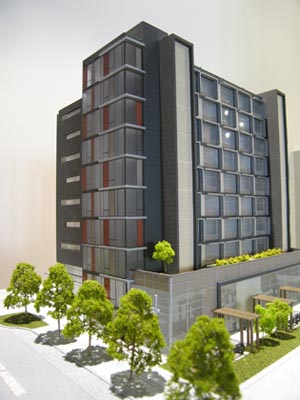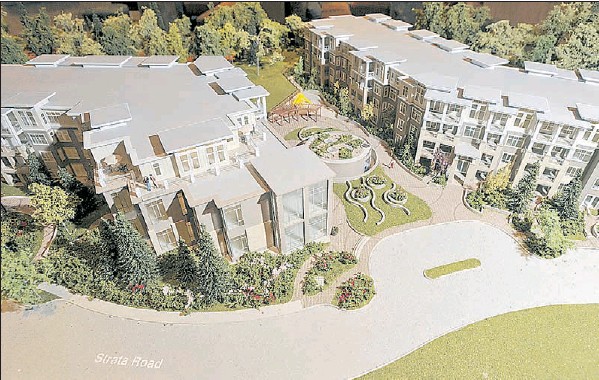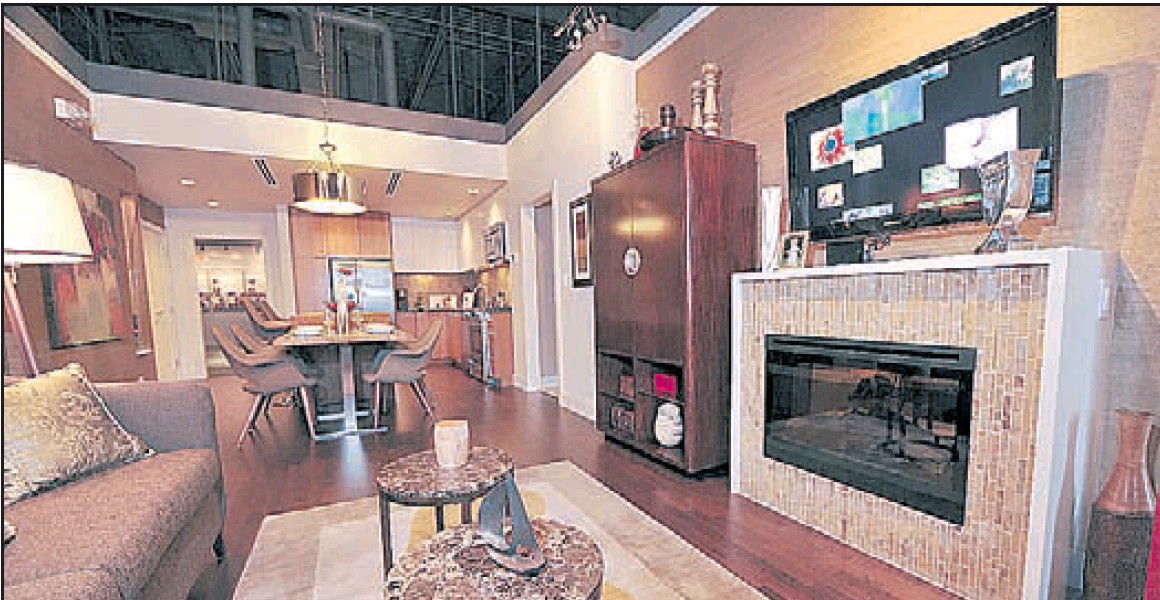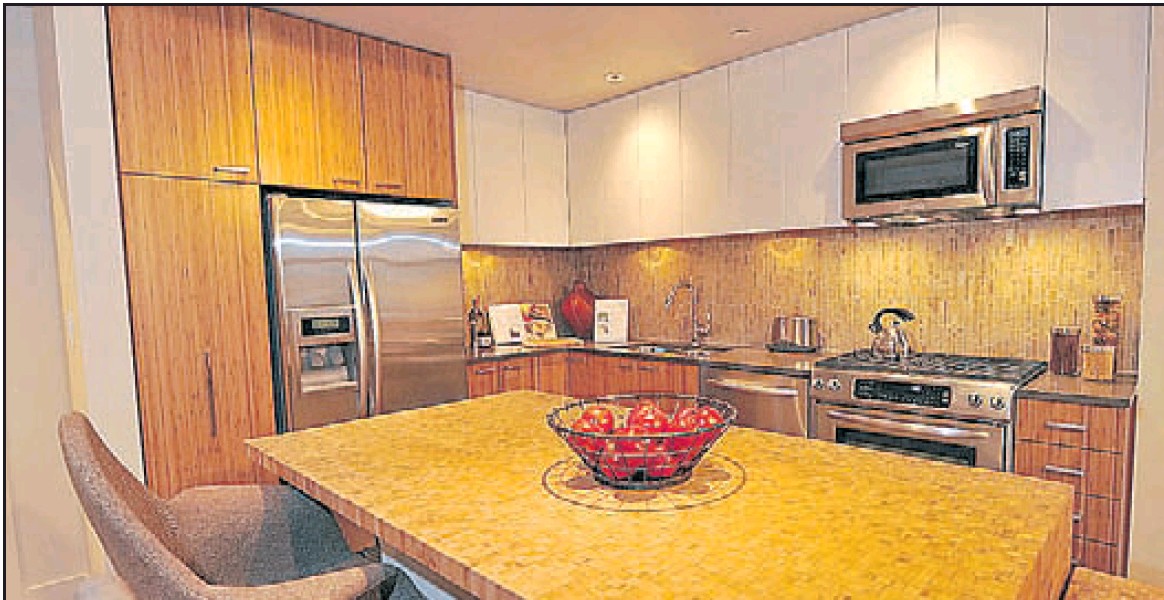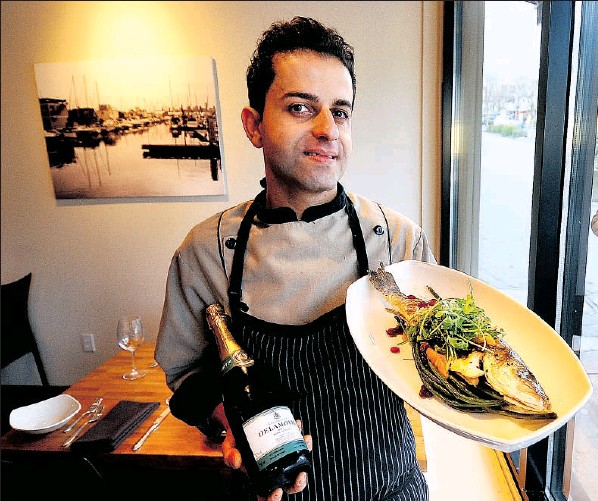Residency on North Vancouver aboriginal reserve means ‘a lot of house,’ but not a lot
Claudia Kwan
Sun

The Signature Estates at Ravens Woods showhome is rich in those ‘extras’ that a spacious residence merits. The Capilano plan, the showhome plan, has a double-height entry and ceilings that soar to more than 20 feet. Wood panelling leads by a recessed niche–perfect for displaying artwork–and radiant floor heating ensures that toes will stay toasty. The living room features a natural gas fireplace with Travertine-stone surround that dominates one wall. An open plan directs you to the family room and then to the kitchen, where sales manager Michelle Rogers posed. Photograph by: Photo By Ian Smith, Vancouver Sun

Wolf, Sub-Zero and Bosch are the appliance suppliers. A 46-bottle wine fridge is tucked under the polished quartz kitchen island counter. An ‘appliance garage’ nestled into one corner of the full-height cabinetry allows the chef to tuck away all of those little machines that normally take up valuable counter space. Out back, there’s a patio of approximately 250 square feet, hookups for natural gas, water, and electricity and a small yard. Photograph by: Photo By Ian Smith, Vancouver Sun
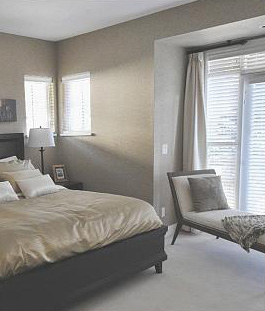
Up the stairs, the hallway between the four bedrooms is large enough to be used as an open den or reading nook. The master bedroom is notable both for a small breakfast balcony nook and keyhole windows, which allow light in around the natural location for a bed. Photograph by: Photo By Ian Smith, Vancouver Sun

The ensuite features a standalone glassed-in shower stall, and a truly sumptuous soaker tub. A Jack and Jill bathroom connects two smaller bedrooms, and a third bedroom has its own ensuite, perfect for guests. Closet organizer systems are standard with the homes. Photograph by: Photo By Ian Smith, Vancouver Sun

Back down the stairs, there’s a laundry/mud room that leads to the roomy double-car garage. Signature Estates townhouses are set up as duplexes, meaning each is side-by-side, with only one other home, unlike row-style townhomes. Photograph by: Photo By Ian Smith, Vancouver Sun
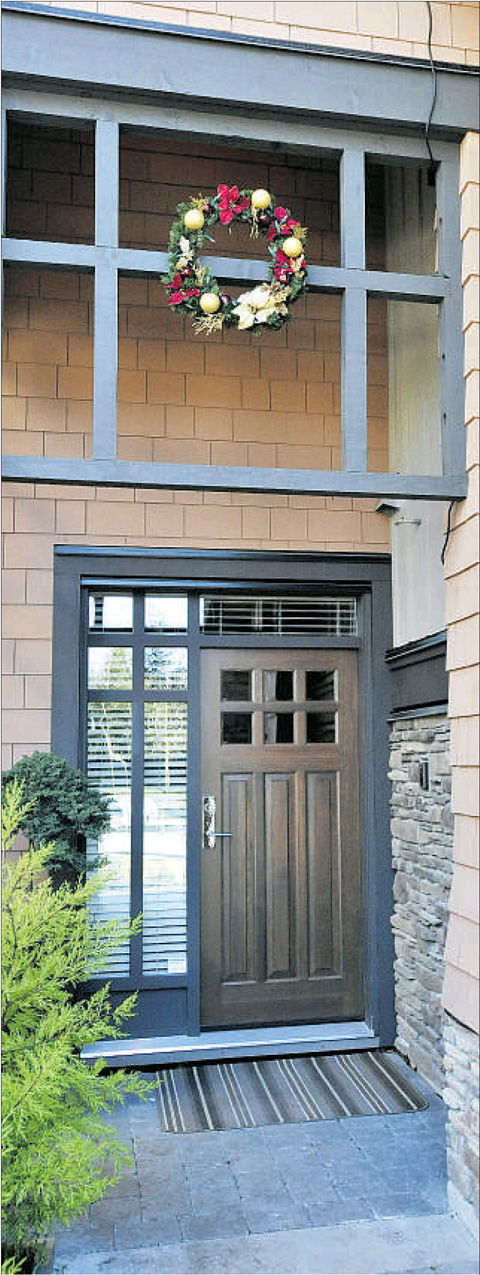
The Signature Estates exteriors broadcast two messages: these are substantial homes and these are homes through which an aboriginal nation is forging a new future. As Tsleil-Waututh chief justin George says: ‘A healthy economy is the key to having a healthy First Nations community, and that’s good for all of B.C.’
THE SIGNATURE ESTATES AT RAVEN WOODS
Project location: Raven Woods Drive, Tsleil-Waututh Indian Reserve, North Vancouver
Project size: 48 townhouses
Residence size: 3-bed + den 3,337 sq. ft.; 4-bed2,287-2,491 sq. ft.
Prices: 3-bed + den $1,038,000; 4-bed $848,000-$928,000
Developer: TAKaya Developments
Architect: Howard Bingham Hill Architects
Interior design: False Creek Design Group
Sales centre: 590 Raven Woods Dr.
Hours: noon -5 p.m. Wed., Sat., Sun.; other viewing appointments available
Telephone: 604-929-1915
Web: ravenwoods.com
Occupancy: Immediate
—
His home, George Morrison cheerfully admits, is a hotbed of chaos at the moment.
“I’ve got boxes piled up six feet high in front of me right now!”
The disorder stems from the packing for a move to a new home in the Signature Estates at Raven Woods, located at the base of Mount Seymour on land that slopes down to Burrard Inlet and Indian Arm.
In less than a week, Morrison will turn the key of the front door. Over the past 12 years, the retired B.C. Hydro electrician and his wife Donna have purchased and lived in three other homes in different developments in the 19-acre Raven Woods community on Tsleil-Waututh land.
“I definitely had some concerns originally [about leasehold land on a reserve], but what convinced me was how genuine a guy [then] Chief Leonard George was when he was talking about the reasons for development.”
The Morrisons are upsizing from a three-bedroom-and-den apartment to a four-bedroom detached townhouse. It will have more room for a dog and the Morrisons‘ college-aged son.
“It’s a lot of house. The kitchen, especially, with those high-end appliances, it’s probably more than we need.”
That’s part of the strategy, says Signature Estates sales manager Michelle Rogers. Since purchasers are getting the homes and not the land, they’re getting exceptional homes for their money.
“It’s incredible value and lifestyle in a good community,” she says. “Everything’s top of the line.”
Rogers says the location allows ready access to Cates Park, the Baden Powell trail, skiing, kayaking and golfing.
An express bus service during rush hour takes passengers to downtown Vancouver. It’s an easy sell for Rogers; she has purchased a townhome at Signature Estates, which marks the 10th phase of the Raven Woods development.
Justin George is now picking up where his father Leonard left off. He was elected chief of the Tsleil-Waututh approximately six months ago, and it doesn’t take much prompting for him to reveal his high hopes for how the development will improve the quality of life for his people.
He paraphrases his father when he notes that where the Tsleil-Waututh were once hunters with bows and arrows who lived off the land, they are now immersed in a modern day hunt in the business arena, requiring tools like education and skills. The new chief also emphasizes, over and over, the importance of long-term relationships–with development partners, with the land and with the people living on it.
The issue of leasehold properties on First Nations land came under heavy scrutiny in the late 1990s, when there was a rent battle between the Musqueam and their tenants. The Raven Woods deal is structured differently; the rent on a 99-year lease is prepaid, and the sales literature says this means there will be no rent reviews or increases during that time.
The lease could be cancelled, but George says it would take a very serious breach indeed to even contemplate such a thing.
“Like any partnership, you have to commit to your partners, and think about what are the goals you want at the end of the day,” he says. “We’re here for the long term, as are our partners.”
George says the First Nations group is cognizant of its reputation, and of the good that can be done with the development funds. The Tsleil-Waututh have managed to buy back 800 acres of traditionally claimed land, built a gym, education and training centre, and cultural centre on the reserve, which offers day care for the general community. Unemployment is less than one per cent.
“Business is our lifeline. A healthy economy is the key to having a healthy First Nations community, and that’s good for all of B.C.,” George says. “We’ve had a lot of positive questions from other nations, asking how we’ve accomplished what we have.”
George says it would be up to the Tsleil-Waututh as a whole to decide whether to eventually take a step similar to the Nisga’a, who recently passed a law allowing members to sell individual parcels of treaty land. Even as the Tsleil-Waututh’s treaty process continues, George says TAKaya is busy looking ahead to other projects at Raven Woods, including two upcoming lowrise buildings.
© Copyright (c) The Vancouver Sun
